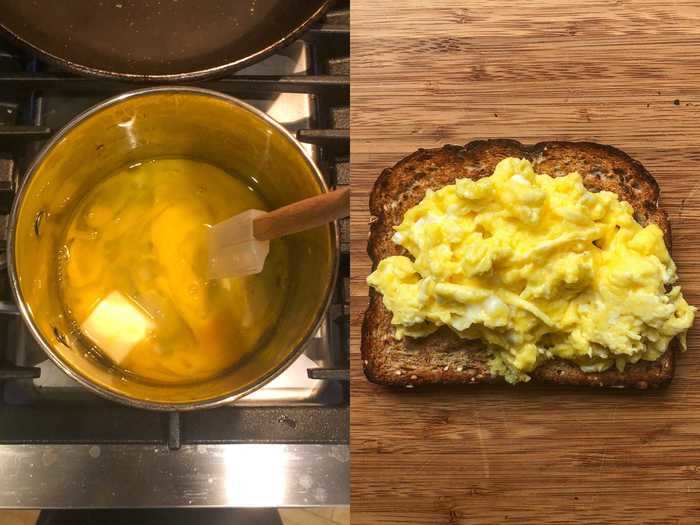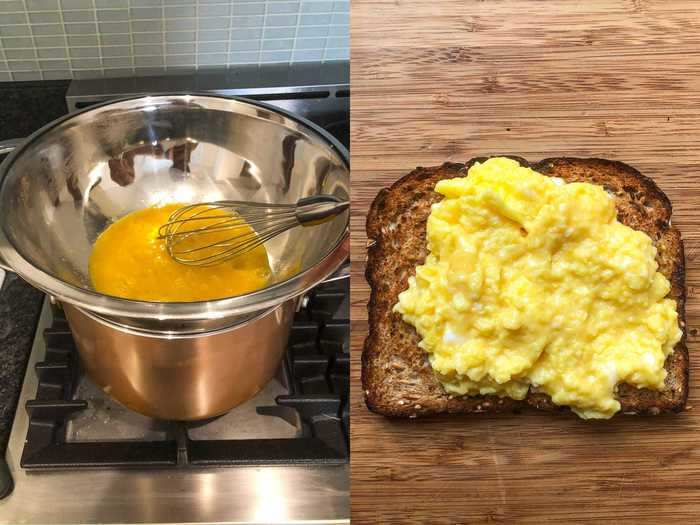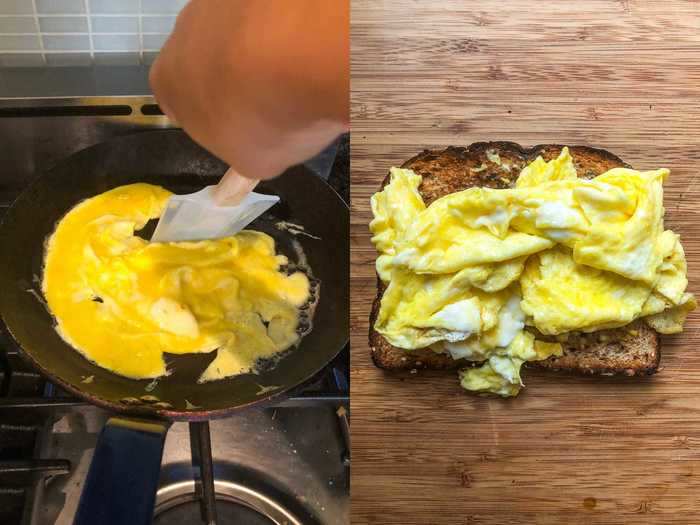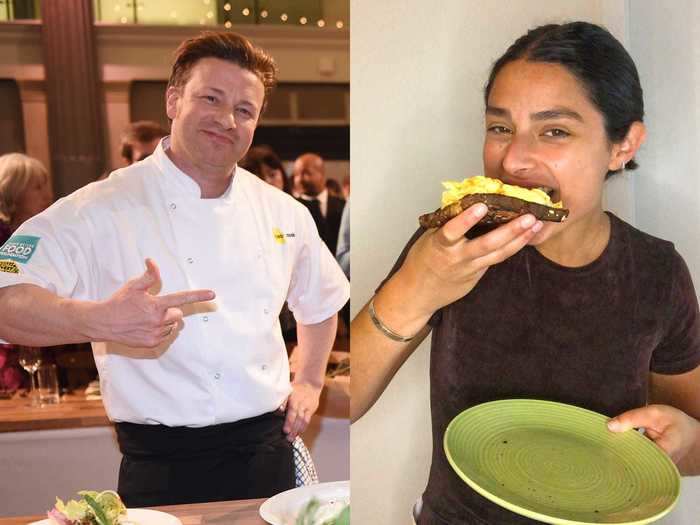Insider
- I made scrambled eggs using celebrity chef Jamie Oliver's take on three global techniques.
- In a YouTube video, Oliver demonstrates how he makes the English, French, and American versions of this classic breakfast.
- Though I thought the French version was tasty, they required more work and more pans than either of the other versions.
- Regardless of which method home cooks use, understand that they'll all take practice with your own kitchen equipment to figure out how to get them just right.
On my quest to find the best way to cook scrambled eggs, I found a video from celebrity chef Jamie Oliver outlining three different techniques: English, French, and American.
Oliver used the exact same ingredients for each batch of scrambled eggs — two eggs per person, a pinch of salt, and a knob of butter — and explained how changing just the method used to cook them can alter their flavor.
After trying the different versions of scrambled eggs for myself, I see what he means. Following the celebrity chef's lead, I used two pots, one pan, one bowl, a whisk, and two spatulas to cook what he has dubbed English, French, and American scrambled eggs.
First, I followed Chef Oliver's instructions for his English scrambled eggs.
These were made in a pot with a spatula.
Rachel Askinasi/Insider
Oliver's technique for English-style scrambled eggs started with beating eggs in a bowl, seasoning them with salt, and then pouring them into a preheated pan with melted butter over medium heat.
To imitate the chef, I used a spatula to move the eggs around in the pot. Oliver said he stirs the eggs every five seconds to keep them from clumping together. These eggs cooked extremely quickly, and I found that it's actually really easy to overcook them.
After about 50 seconds, I had a pile of finished eggs. Though mine came out a bit less creamy-looking than Oliver's did.
Taking a bite, I noticed they were more moist near the top and drier on the bottom, probably a result of the eggs continuing to cook in their own heat even after I removed them from the pot. The flavor was bold and bright, and good enough that I'd make them again.
Next, I tackled what he dubbed the French method.
I used a whisk and a spatula for these eggs.
Rachel Askinasi/Insider
The chef's version of French scrambled eggs was extremely labor-intensive and significantly more complicated than the other two methods he outlined in this video.
First, I had to set up a bain-marie (or a heated water bath). To do that, I filled a large pot with around two inches of water and let that come to a boil. Then I whisked my eggs and seasoned them in a bowl, which I then placed down onto the top of the pot. Oliver used a glass bowl, but I only had a metal one to use.
Oliver said this would take a long time and a lot of on-and-off whisking, but mine only took a couple of minutes to come together. I do believe it took less time because I was using a metal bowl, which is better at conducting heat than glass.
The chef described these eggs as having a "luxurious" texture, but mine felt more wet than velvety. I'd imagine with more practice and the right bowl I could nail down the ideal texture.
These eggs were tasty, though. I thought they had a rich flavor to them even though they felt a bit watered down.
Lastly, I mimicked Oliver's technique for classic, American "diner eggs," as he called them.
I made this batch of eggs in a pan.
Rachel Askinasi/Insider
These eggs, which I beat and seasoned in a bowl before pouring them into a buttered pan on medium heat as per Oliver's instructions, tasted overdone. The flavor had no depth or richness — which, yes, was more reminiscent of scrambled eggs I've eaten at a diner versus ones I've eaten at white-tablecloth restaurants.
While I was able to retain some of the moisture on the top of the eggs after using a spatula to pull the raw egg from the perimeter of the pan to the center, most of it faded away to dryness.
Though it only took around one minute for these eggs to cook, they still took a little bit more time and attention than the English version — these went from raw-looking to fully cooked in a matter of seconds.
Different cooking methods can drastically change the flavors you get from the exact same ingredients.
I think Chef Oliver would approve of my eggs.
WPA Pool/Pool/Getty Images, Rachel Askinasi/Insider
I don't think I'll ever stop being amazed at how different the same scrambled eggs can taste depending on whether you stir them in a pot or fold them in a pan.
The English method outlined by Oliver is a good option for anyone who likes a fluffy but drier scrambled egg. (For a more velvety texture, I'd recommend adding and removing heat while stirring continuously like Michelin-starred chef Gordon Ramsay suggests.)
Oliver's French-style eggs took a lot of work. I spent more time setting up the bain-marie than I did actually cooking the eggs, and I had the largest amount of pots and utensils to clean after this batch. If you're willing to dedicate the time to practicing this scrambled-egg method, you might feel like all the effort paid off — but, unfortunately, I didn't feel that way.
If you're a lover of eggs that are fully cooked through, Oliver's American style is likely for you. They were both easy to make and versatile. Personally, I didn't find the flavor at all appealing, but I did think they were a pretty good homage to the American diner scrambled-egg experience like the chef says in his video.
If you try your hand at Oliver's eggs at home, you might find that it requires some trial and error to get your scramble to look like the chef's — as I did with the French-style eggs, not having the exact same cooking equipment — but ultimately you'll find a method that suits you.




